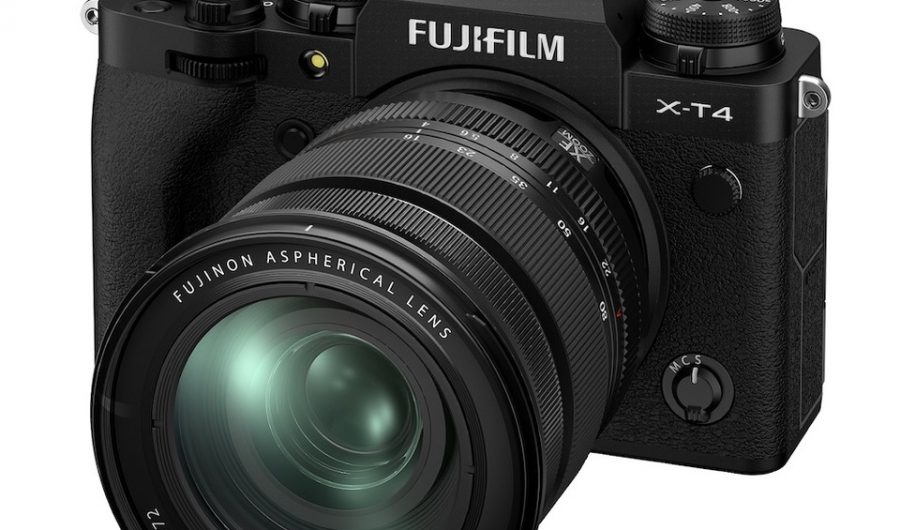


2020 was a relatively slow year for cameras, with the (very) notable exception of Canon’s EOS-R5 and R6. We had a couple of small and light cameras for their sensor size, neither perfect, but both pointing in interesting directions. We had a couple of cameras adding image stabilization to the beloved Fujifilm line. We had only one two new Sony interchangeable lens cameras, unusually low for them (although this may be biased by FIVE in 2019). One of them was a size-squeeze of an existing model, while the other was a movie camera – there were no technologically new Sony still cameras in 2020. Nikon gave us an important new entry-level model and a couple of solid, if unexciting updates. Panasonic released the first truly mainstream L-mount camera – will it be enough? There were no really major cameras from smaller manufacturers (the Sigma fp is technically a 2019 model, although it made most of its impact in 2020). We haven’t seen a new Pentax since 2018 –RIP Pentax?
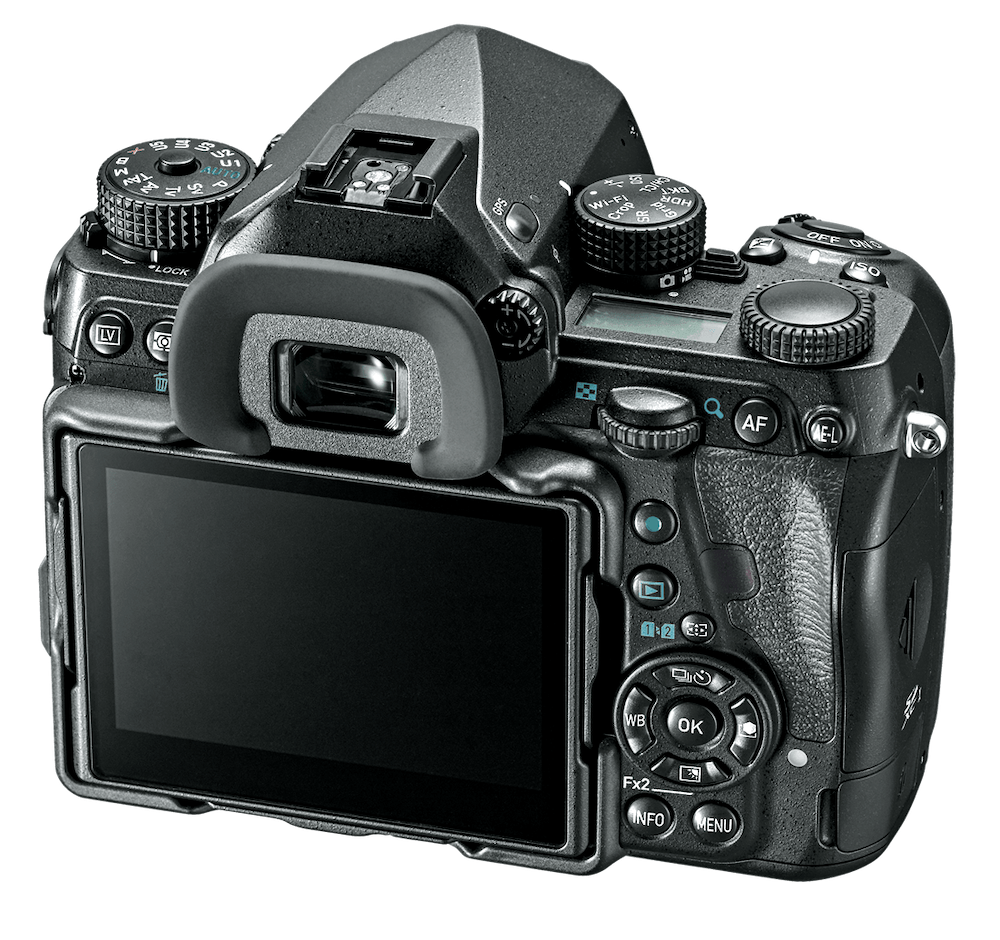
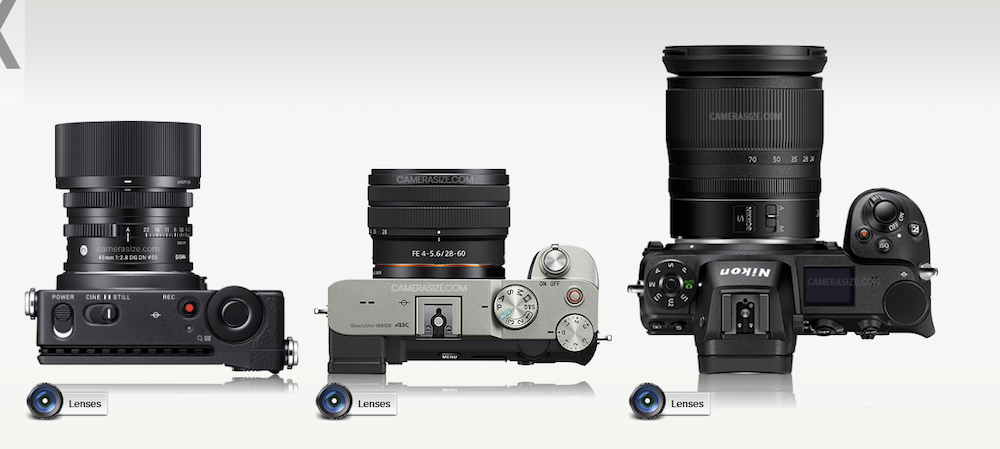
Looking forward technologically, we’re likely to see some smaller and lighter full-frame bodies and lenses in 2021. We already have the Sigma fp and Sony’s brand-new A7C, both of which claim to be the smallest and lightest full-frame mirrorless body on the market. Both are, as their manufacturers measure it – the fp is smaller and lighter, but is missing some important features like a viewfinder, image stabilization and even a shutter. Sony (somewhat justifiably) excludes the fp as a full-featured camera and claims the lightweight crown as well. Both cameras use versions of the ubiquitous Sony 24 mp full-frame sensor, which offers excellent image quality. If you’ve used any 24 mp full-frame Sony or Nikon from the past decade or so, you’ve met a version of the sensor – the more recent ones offer improved video and dynamic range.
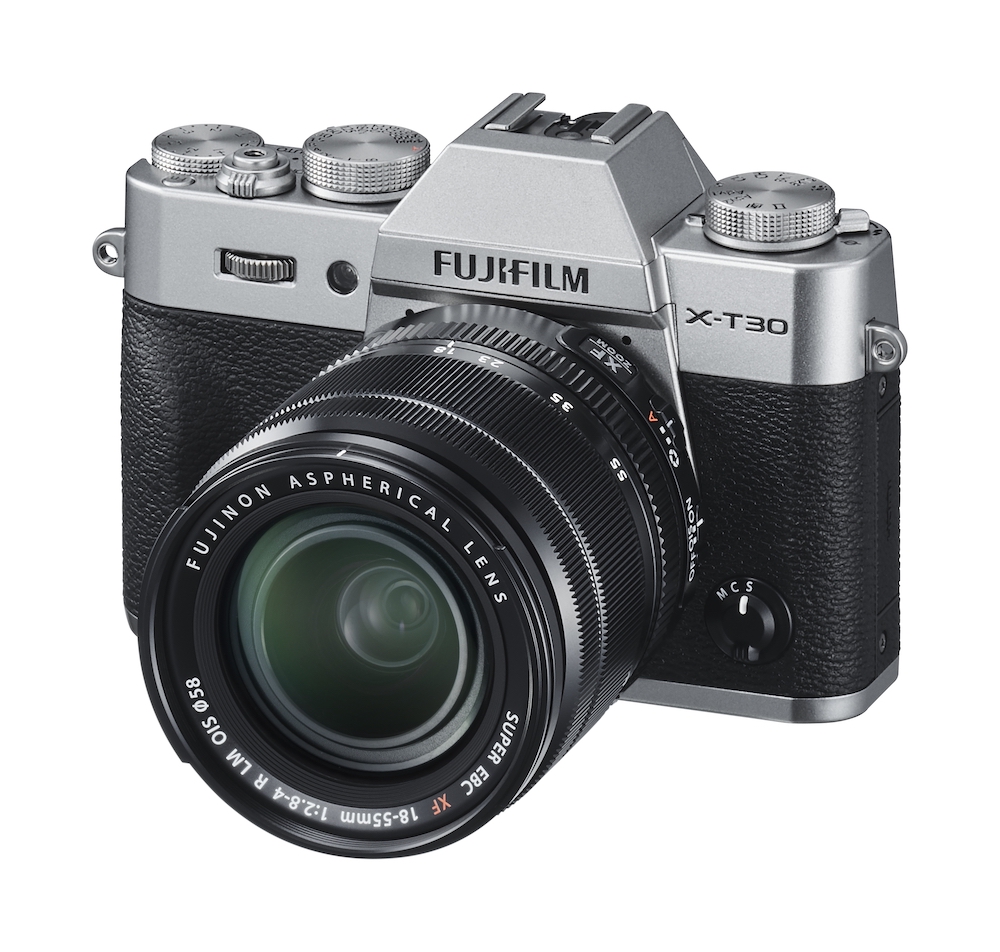
I’ve had both cameras here, and they offer interesting tradeoffs. The fp is really bare-bones to get the weight down as far as they have (remarkably, it’s only about as heavy as a Fujifilm X-T30, which is a very light APS-C camera). There are two severe ergonomic tradeoffs to get it as light as it is. First, the battery life is the worst of any camera in recent memory, with a tiny battery and mediocre power management. I once managed to get less than 100 shots on a charge, admittedly by letting the power saver do its thing and rarely turning the camera all the way off. Turning it off with the switch helps a great deal, although it takes a bit of time to boot up, so that’s a tradeoff. For perspective, it’s significantly worse on battery life than a Fujifilm X-H1, which had a power-hungry image stabilizer and used the underpowered NP-W126S battery. It’s worse than an original Sony A7r, which was trying to power a 36 mp full-frame sensor with a tiny little battery designed for the ultracompact NEX-5. I don’t know if it’s worse than an A7r II, which added an image stabilizer to the A7r’s power woes.
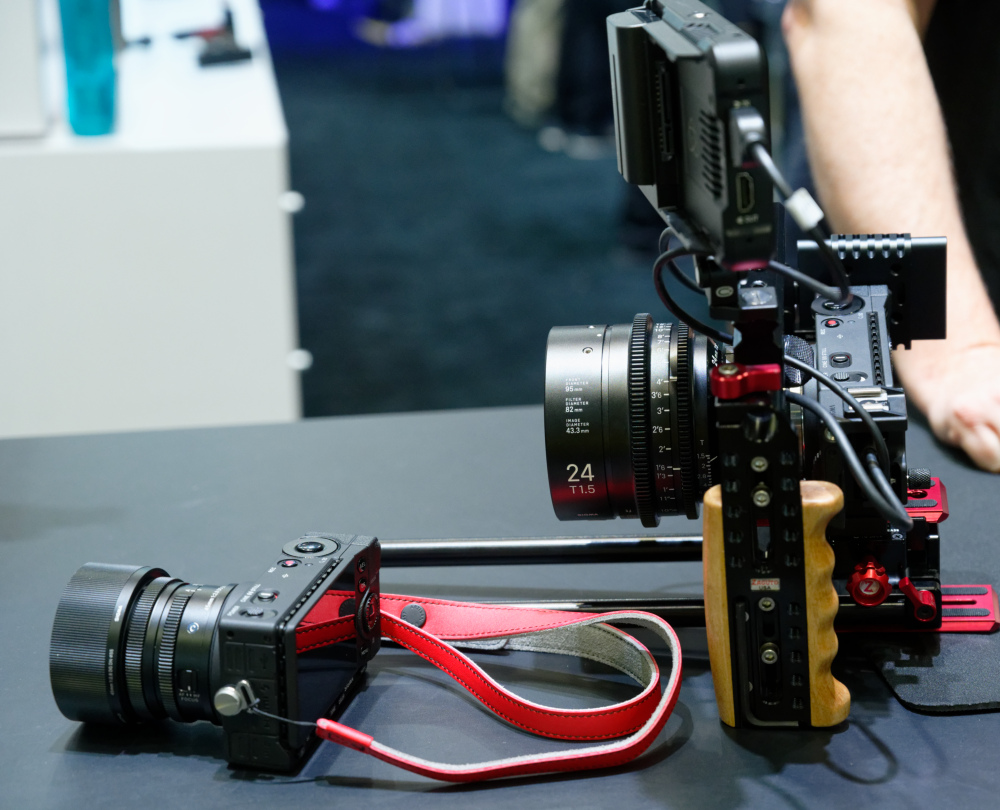
The second tradeoff is that it is both viewfinderless and lacks an image stabilizer. It’s not easy to hold steady using its rear screen with no stabilizer to help out. Sigma makes a viewing hood that allows it to be used at eye level – but that’s bulky enough that one might as well use a heavier camera. Image quality is excellent – as should be expected of a 24 mp full-frame camera using the usual sensor. It’s also absolutely beautifully built. While it’s not the most practical camera in the world for standard handheld shooting, its tiny size and light weight offer interesting options for rigging.
It’ll fit on a small, light gimbal, drone or similar rig, and it’ll get into any corner as a B-cam on a movie set. It’s intermediate in design between a standard still camera, a modular cinema camera and a “crash cam” designed for rigging in small spaces. It has a very wide selection of video modes, although some of the higher frame rates require recording to an external USB-C SSD instead of an SD card. Like most pro video cameras, but unlike a normal still camera, the fp will record directly to a SSD (although, to take advantage of this, it should probably be connected to external power as well). It’s really a small cinema oriented B-camera that happens to take stills as well, since rigging it out to be a truly functional still camera would make it heavier than a number of more traditional still cameras.
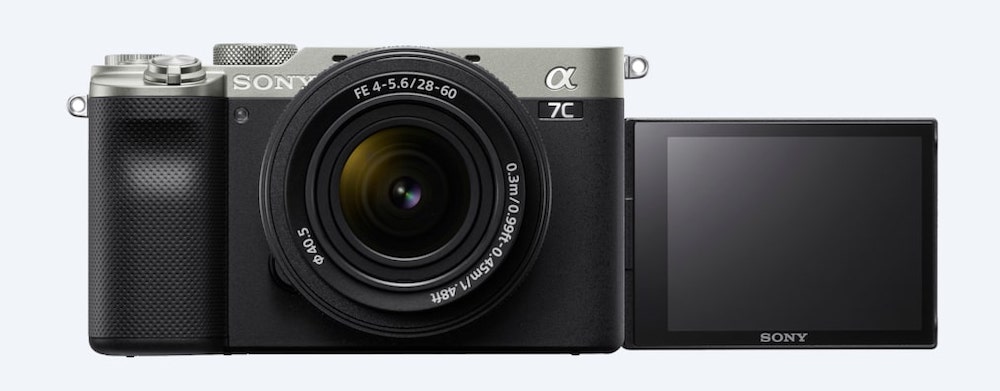
Sony’s A7C follows a more traditional pattern than the Sigma fp. Everything that is normally found on a camera is on the A7C… As a matter of fact, it is possible to be more specific. Everything that is found on a Sony A7 III is also on the A7C, with a couple of exceptions. The A7C is basically an A7 III that is about 25% lighter, lacks the dual card slots, the viewfinder hump and some of the grip. It could also be seen as an A7 III in an a6000-type body.
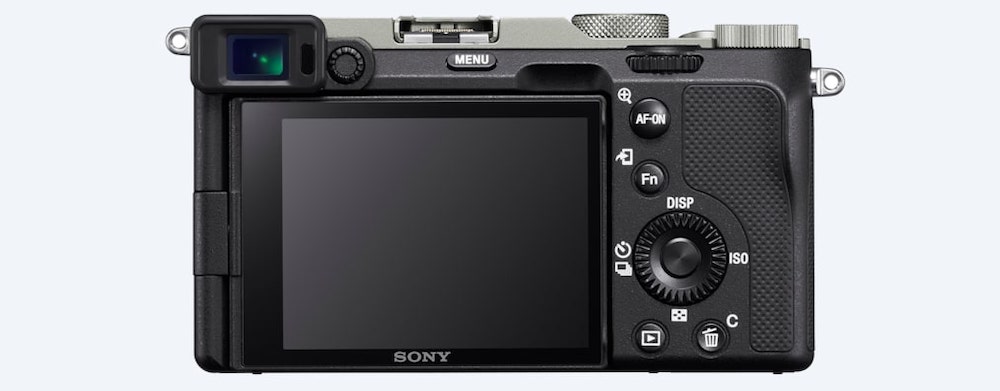
After years of ergonomic improvements to the A7 series, which also drove up the size and weight, the A7C takes a lot of the gains back to re-lose some of the weight. The grip is smaller than on a modern A7 series camera, the front dial disappears, we lose the AF position joystick and, most notably, the viewfinder takes a huge hit. Unlike the Sigma fp, the A7C at least HAS a viewfinder, and its natural shooting position is at eye-level.
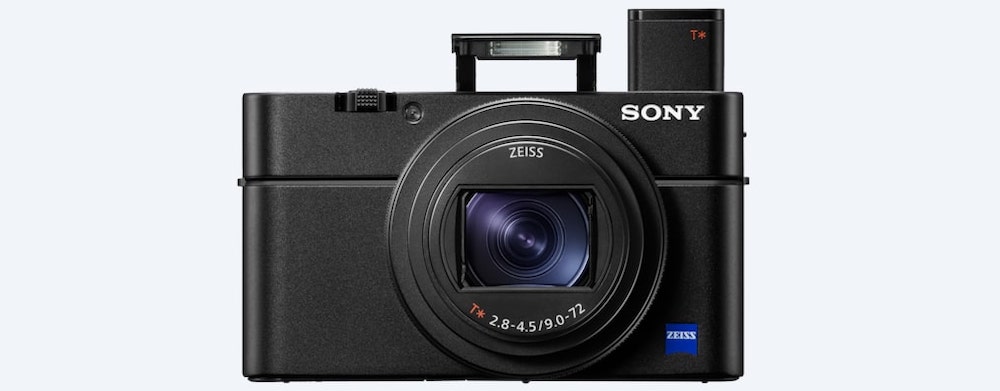
Unfortunately, rather than the very good to superb viewfinders on other recent A7 series cameras, or even the decent ones on the a6000 series, this viewfinder is from a particularly dusty corner of Sony’s parts bin. It’s apparently the finder from recent Sony RX100 series cameras (anything from the RX100 IV on), although it is fixed in the classic Leica position, rather than a pop-up. The finder is tiny, and the optics aren’t great, although the resolution is decent. The A7C uses the same (superb) battery as every other recent A7 series camera, but fitting the big battery in the much smaller grip seems to have required moving the SD card slot (which usually lives behind the battery) to the opposite side of the camera with the ports. The SD card slot and the ports take up much of the space over there – leaving very little room for the finder, and Sony didn’t want to use a central hump to house it, adding size and weight. Their solution was to use the RX100 finder, and it’s a shock to anyone who’s used to the A7 series finders. Would adding a small bump to the left side of the camera above the ports have allowed at least the a6000 finder, if not the A7 finder? They wouldn’t have needed a full-scale “prism” hump, nor to move the finder back to the center (where it would collide with the lens mount and the sensor) – just bump it up a tiny bit in its current position. A few grams and a few millimeters would have been worth it to get a decent finder.
The other ergonomic compromises are not as severe – I definitely miss the joystick and the front dial, but it’s highly usable if you stick to tracking AF (which Sony is very good at) or wide area, and use program, shutter or aperture priority with exposure compensation. I almost always use aperture priority plus exposure compensation anyway, so the only real problem with the dials is that the rear dial and the exposure compensation dial are both operated by the same finger. I do like to use flexible point AF modes, so the loss of the joystick is more of a problem.
Image quality wise, it’s an A7 III, which is, in turn very similar to an A7 II… It has essentially all of the features of a (still current) A7 III, and the prices are very similar, depending on promotions. The two real non-ergonomic feature deletions are that the A7C has only one card slot and that it is probably less well weather sealed (the SD card door is seemingly a weak point, although I didn’t test it) The choice is essentially the 25% lighter A7C with its ergonomic compromises versus an ergonomically superior A7 III. The A7C might make sense if you are primarily planning to use small lenses with it, or as a second or third body in a larger Sony system. If you put the 200-600mm or another large lens on an A7C, the difference in body size becomes trivial…
Sony is almost certainly going to replace the A7 III with an A7 IV, probably featuring a new sensor, at some point in 2021. This will open up a much larger feature gap against the A7C – the larger camera will have a distinct advantage in image quality, 4k 60p video and the best ergonomics in the Alpha line. The A7C is as close as it is to the A7 III because the latter is a two year old model approaching replacement. While the A7 IV will almost certainly not be the feature headline camera of the year, it may be among the most significant, as the new mainstream model in a very popular line. New top-end cameras generate a lot of news coverage, but it’s the A7, Z6 and R6 type models that generate a lot of the full-frame sales, just as D610s and EOS 6Ds were responsible for a large proportion of full-frame DSLR sales.
The A7C and the Sigma fp are probably not the last very compact full-frame cameras we’re going to see. I’d expect an offering from Canon this year, and perhaps an L-mount Panasonic as well. In every case, they’ll have some significant ergonomic compromises and probably some feature deficits as well. If it were possible to build a full-frame camera with dual card slots, image stabilization, full weather sealing, a big, bright viewfinder and a decent grip and keep it under half a kilogram, everybody would be building them. Image stabilizers keep getting smaller, and batteries get a little denser, but grips, screens, controls and viewfinders are sized for human hands and eyes, while lens mounts need to remain standard and are sized to cover the sensor. We might see some weight lost to construction innovation (carbon fiber?), and possibly some to control changes (if people are willing to accept more touch screen controls), but making a significantly smaller camera for a given sensor size will require compromise. It will either have to have some deletions like the A7C, or be modular like the fp. Modular cameras hold a lot of promise – Sigma’s not quite there yet, but are they showing us the way?
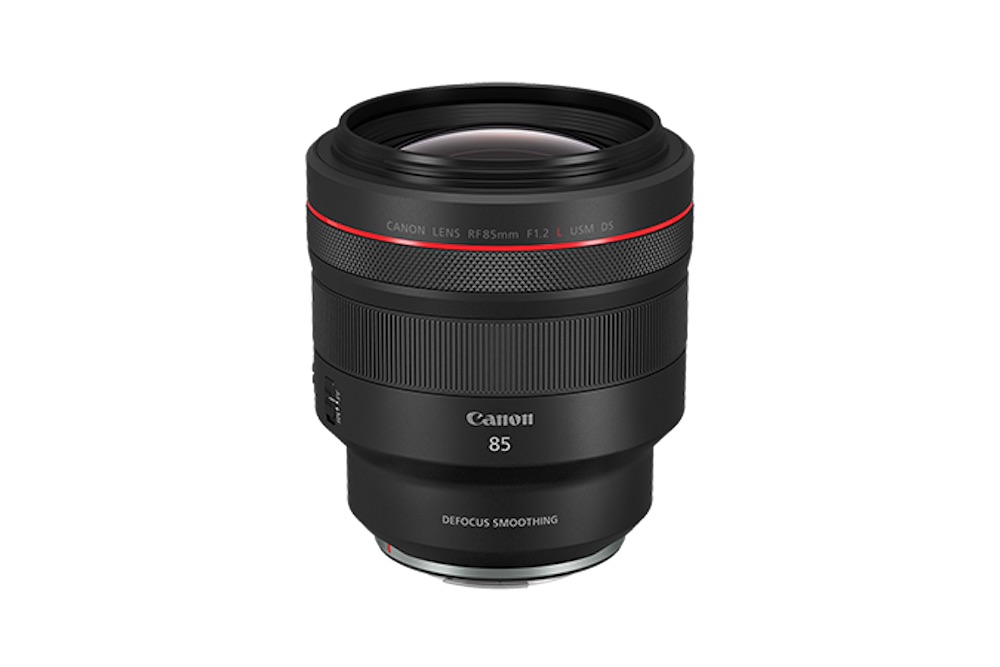
We’ve had a number of more conventional new cameras this year. Most of them were iterations of models we’re familiar with, while a few answered important questions. The biggest question that got answered this year was “what’s all that expensive Canon RF glass for”. Canon’s initial EOS-R release had been confusing – a 30 megapixel body with a slightly underperforming sensor and a polarizing design, coupled with some very expensive, groundbreaking glass. The second EOS-R body to come out was the 26 MP EOS-RP, the least expensive full-frame body ever made (other than old models at deep discounts) – but Canon kept releasing mostly high-end lenses. At one point, the EOS-RP came with an EF lens on an adapter as its kit lens, because there was no appropriate RF lens.
Canon got around to the less expensive lenses in 2020, but they also released the body to go with those beautiful, pricey lenses – the EOS-R5. The sensor is 45 MP, and is the best performer Canon’s ever released, with dynamic range and noise comparable to the high-pixel count sensors in the latest Sony and Nikon pixel monsters, along with Canon’s traditionally excellent colors. It is a superb still camera, and it also has overwhelming video modes (8K raw!!!) for short takes, although it has overheating issues in extended video use. Unlike the polarizing design of the original EOS-R, everyone who’s picked an R5 up says that it feels just like a Canon. They also released the EOS-R6, a midrange model with many of the same features, but with a 20 MP sensor and lacking the unique 8K video modes. I haven’t used either one yet, but I very much look forward to testing an EOS-R5 in particular.
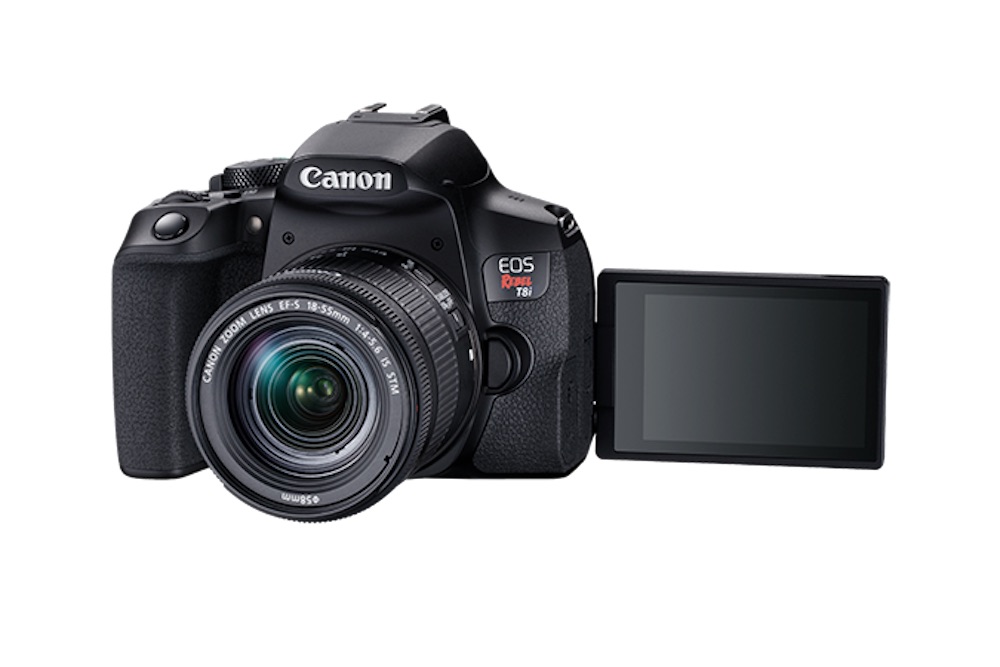
In addition to the two mirrorless models that help explain their overall strategy, Canon released two DSLRs in 2020. One was Yet Another Rebel (if it matters, this one’s the T8i), and it is very similar to its predecessor the T7i. At this point, the territory of entry-level 24 MP APS-C DSLRs is pretty well explored, and there’s not likely to be much innovation. If you want one and prefer Canon, pick up a T8i (or last year’s T7i on a discount). If you prefer Nikon, a D3500 or D5600 fills the bill. There is a rumor that Nikon might be discontinuing them, making room for an entry-level Z body. Even if they ARE formally discontinued, they’ll probably be available for a while. Unlike their mirrorless brethren, these cameras haven’t changed much in a while. Anything you buy now will be very similar to what you’d have bought a few years ago. The question you should ask before buying any entry-level DSLR is “why not mirrorless”? These are competent cameras, but they are not where the development effort is going – Canon hasn’t released a DSLR lens since 2018, and nothing except exotic telephotos since 2017.
There are reasonable answers to why one might buy an entry-level DSLR in 2021, and one of the best is “because I have Canon or Nikon lenses and I want to keep using them”. Even then, it’s worth considering your manufacturer’s mirrorless line and a lens adapter – the first party adapters (Canon to Canon or Nikon to Nikon) work very well. Nikon makes the transition easy, because the mirrorless Z50 is comparable to an advanced entry-level DSLR, and it is APS-C, so DX Nikkors work. If the low-end Nikon DSLRs even threaten to go away, expect a well-thought-out mirrorless body below the Z50 level as a replacement. If your Nikkors are full-frame, there’s the Z5.
Canon makes it harder, because their APS-C mirrorless offerings are the dead-end EOS-M system, rather than the desirable EOS-R system. If you have APS-C EF-S lenses and need a new camera, you have three choices, none of them great. One is to buy another DSLR and delay moving to mirrorless. The second is to buy an EOS-M body, which is an active system, but one for which Canon is developing only very low-end lenses, mostly slow kit and travel zooms. An EOS-M investment doesn’t translate to EOS-R, either in money or in time spent learning the quite different cameras. The third is to buy an EOS-R series body, which is where Canon’s energy is going – but your lenses will crop to APS-C on the full-frame body, and unless you have an expensive EOS-R5, the resulting images will be roughly 10 MP. If you have full-frame Canon lenses, the choice is easy – a full-frame EOS-R series body. Many of us are hoping for an APS-C EOS-R body in 2021, which would solve the problem (and probably end the EOS-M system).
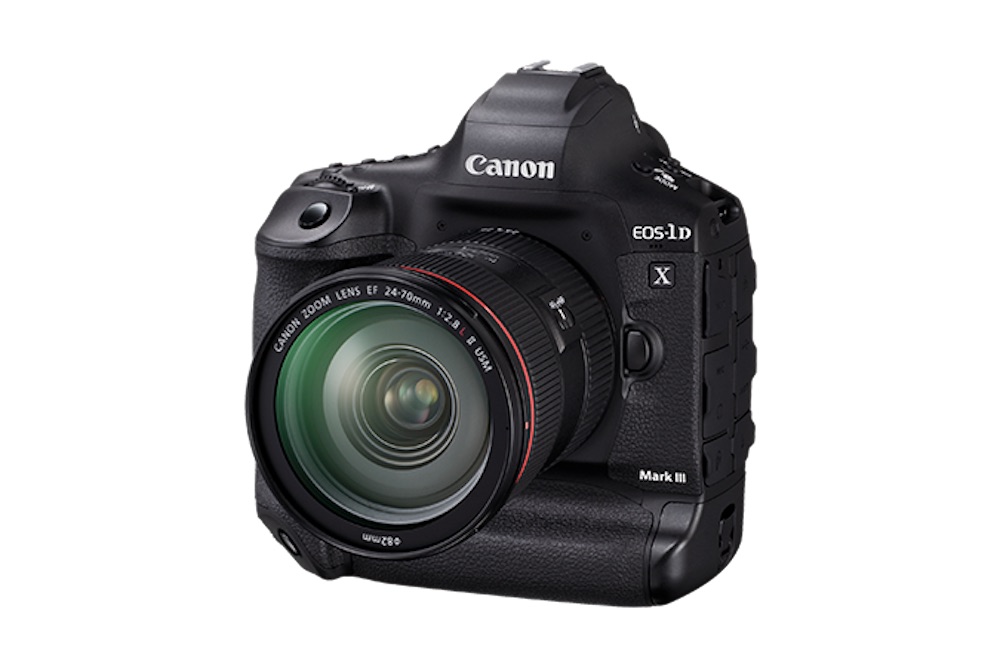
Canon’s second DSLR of 2020 is more interesting, although it’s a camera most of us will never get our hands on. It’s the EOS 1Dx mk III, a top-end sports camera, and it costs $6499. What is interesting about it is that it’s as close to a DSLR/mirrorless hybrid as we’ve seen. Unlike most DSLRs, it has top-quality video specs (including 5.5K 60P raw), using live view on the rear screen. It has two complete autofocus systems – Canon’s latest DSLR AF with 191 points when it’s being used with the optical viewfinder, along with their Dual Pixel AF with thousands of points in live view. It shoots 16 frames per second through the viewfinder – and matches Sony’s A9 II at 20 fps in live view About the only thing that would complete its dual nature that it doesn’t do is that it doesn’t have a hybrid viewfinder. If there were a way to view an EVF through the finder, it would be a full hybrid. Fujifilm has done this with simple optical finders in the X-Pro series, but it has never been done with a DSLR prism. How difficult (or impossible?) would it be? Will we ever see such a camera, or will the “Canon 1Dx mk IV” and the “Nikon D7” simply be mirrorless cameras with superb EVFs that eliminate most lag? No, most of us don’t need a 20 MP, 20 fps $6500 sports camera – but it shows off a lot of interesting technologies.
2020 was Fujifilm’s year for image stabilization. We actually first saw a stabilized Fujifilm body in 2018’s X-H1, but that was a camera that a lot of the Fujifilm user base didn’t warm to. It was bulky, and perhaps more importantly, it didn’t feel like a Fujifilm camera – it lacked the marked, direct control dials Fujifilm shooters are used to. It had a great grip, and was Fujifilm’s first seriously capable video camera, but it wasn’t ever really a success until Fujifilm cleared them out at fire-sale prices. The image stabilizer was excellent, but it was power-hungry, and the poor little NP-W126S battery had been feeling the strain for several models prior, especially as Fujifilm announced bigger, hungrier lenses. The X-H1 could last for less than 200 shots on a battery under many circumstances, although it could also deliver somewhat more in other cases.
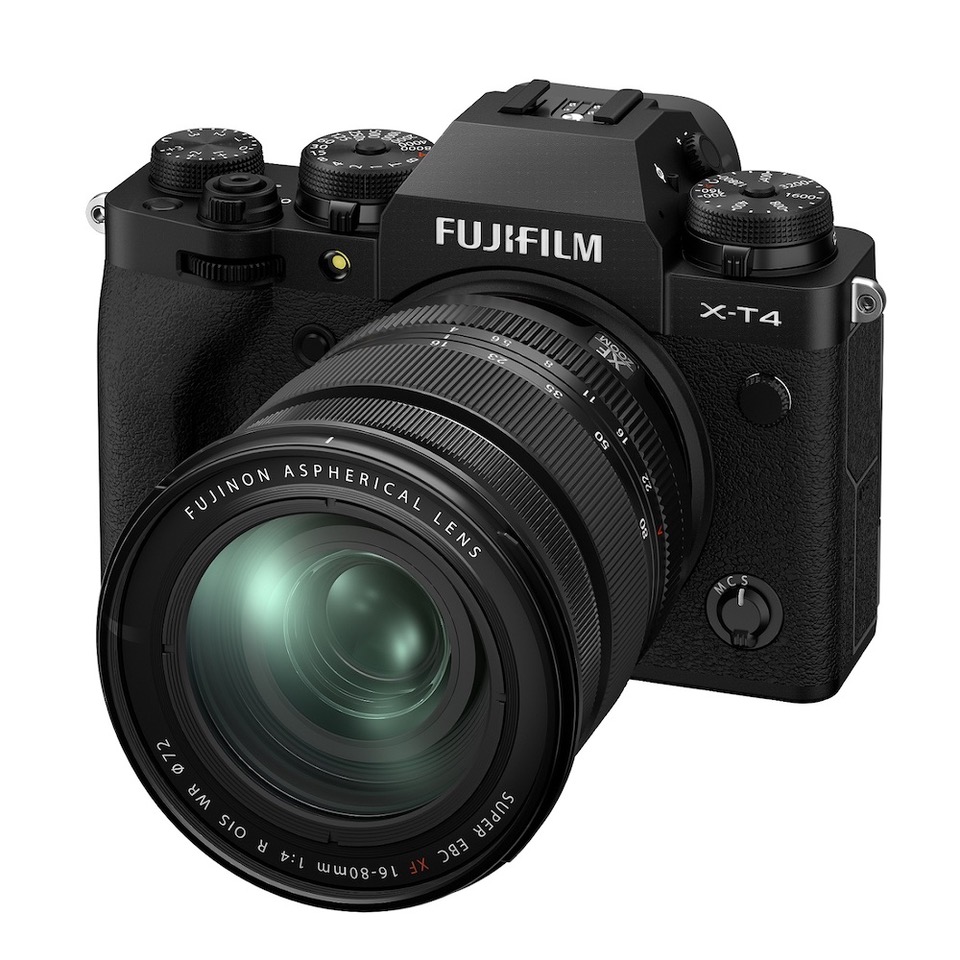
2019 saw Fujifilm release no further stabilized APS-C cameras, although they did release the stabilized, medium format GFX 100. It was an amazing technical feat to stabilize that big, high-resolution sensor – and it works very well. Unlike the X-H1, the GFX 100 has plenty of power, using two of Fujifilm’s NP-T125 batteries that power the other GFX bodies. At $10,000 for the body, it’s hardly a mainstream camera, though.
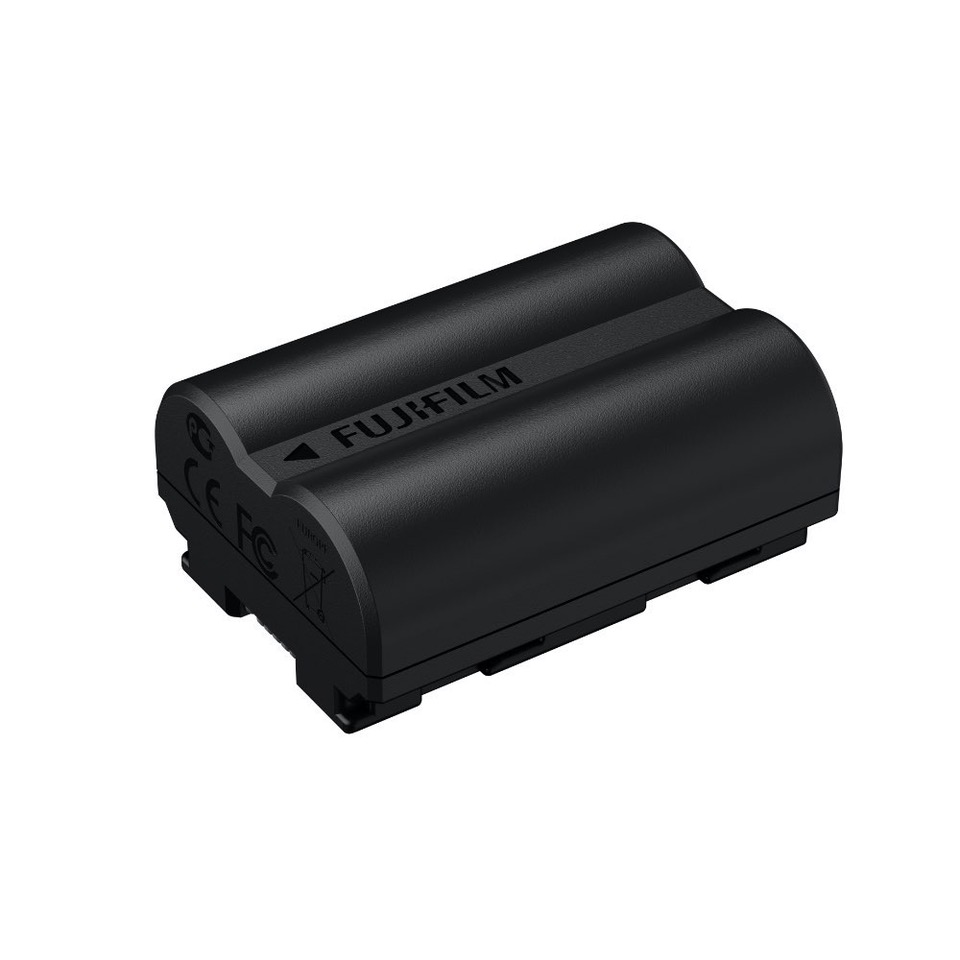
In 2020, Fujifilm finally brought image stabilization to the core of their APS-C line, and they did a great job of it. The beginning of the year saw the X-T4, an image-stabilized addition to their highly successful X-T line. All the dials are there and it handles like a classic Fujifilm body. The previous X-T3 had brought very capable video to the X-T line, and the X-T4 makes the video modes easier to access as well as adding the very good stabilizer. It just may be one of the most capable still/video hybrids out there – in a Fujifilm camera? The company that ignored video for years, until finally getting serious about it in 2017 or 2018? Fujifilm also finally retired the NP-W126S battery that had given the X-H1 such battery life trouble, as well as reducing the image stabilizer’s power consumption. The new NP-W235 looks suspiciously like a Nikon EN-EL15, a Canon LP-E6 or a Sony NP-FZ100, all good-sized batteries that can power hungry, feature-laden cameras for quite a while. I haven’t used an X-T4, but it’s high on my list of cameras to review in 2021.
At the end of the year, they followed the X-T4 with the X-S10. Why didn’t they call it an X-T40 (as has been their practice with second-tier versions of the X-T line)? It has a more standard button and dial (less typically Fujifilm) interface, it’s significantly smaller and lighter than the X-T4, and it’s missing many of the higher-end video modes. It’s also missing the dual card slots and weather sealing, although it keeps the X-T4 sensor, the best sensor short of full-frame. Fujifilm shrank the image stabilizer again, and they managed to fit it in this diminutive camera. Unfortunately, as part of keeping the size and weight down, the old NP-W126S battery is back. It didn’t fare well in the stabilized X-H1, but Fujifilm claims to have reduced the power consumption of the image stabilizer as they made it smaller.
Sony released two cameras in 2020 (plus the vlogger-focused, fixed-lens ZV-1), one that had been expected for years, and one that was a surprise. The surprise entry was the A7C discussed above, while the expected camera was the video-focused A7S III. Many Sony watchers were also expecting the A7 IV, and they were surprised to get the A7C instead. The A7S III was well overdue, but the time Sony put into it shows. It is only a 12 MP still camera (and should really be thought of as a dedicated video camera, except for very low light), but it produces gorgeous 4K video up to 120P. Sony’s approach has been to put very good video features, but not all they can do, into their still cameras. They offer the A7S series with all the video chops, but very limited still resolution.
It’s an expensive approach if you need both, but it allows each camera to be without compromise. I had an A7S III here for a couple of weeks, and the video quality is by far the best I’ve seen (it’s also the only camera I’ve used that does slo-mo in 4K). It handles almost exactly like an A7r IV, to the point that I could pick up one or the other and not have to relearn anything at all. The one welcome exception is that Sony finally fixed their menus. Hopefully, we’ll see the A7S III menus on every Sony going forward – they’re far better than the old ones, and even slightly better than Canon or Nikon menus. No camera menu system is great (look at a well written Mac application for menus that really work), but these are very decent.
Nikon released three Z series cameras and a DSLR in 2020. Two of the Z cameras were modest midlife upgrades to the 2018-model Z6 and Z7. Both the Z6 II and Z7 II have gotten criticism for simply being what the Z6 and Z7 should have been in the first place, which is partially, but not fully true. One of the big new features in the Z6 II and Z7 II is absolutely a “should have been there” feature. The originals, inexplicably, had no contacts to allow duplicate controls on a vertical grip – Nikon has been doing this for years on DSLRs and film SLRs before that, and they’ve done it well, so why did they screw it up on the original Z series? They fixed it on the updates, but why the mistake in the first place?
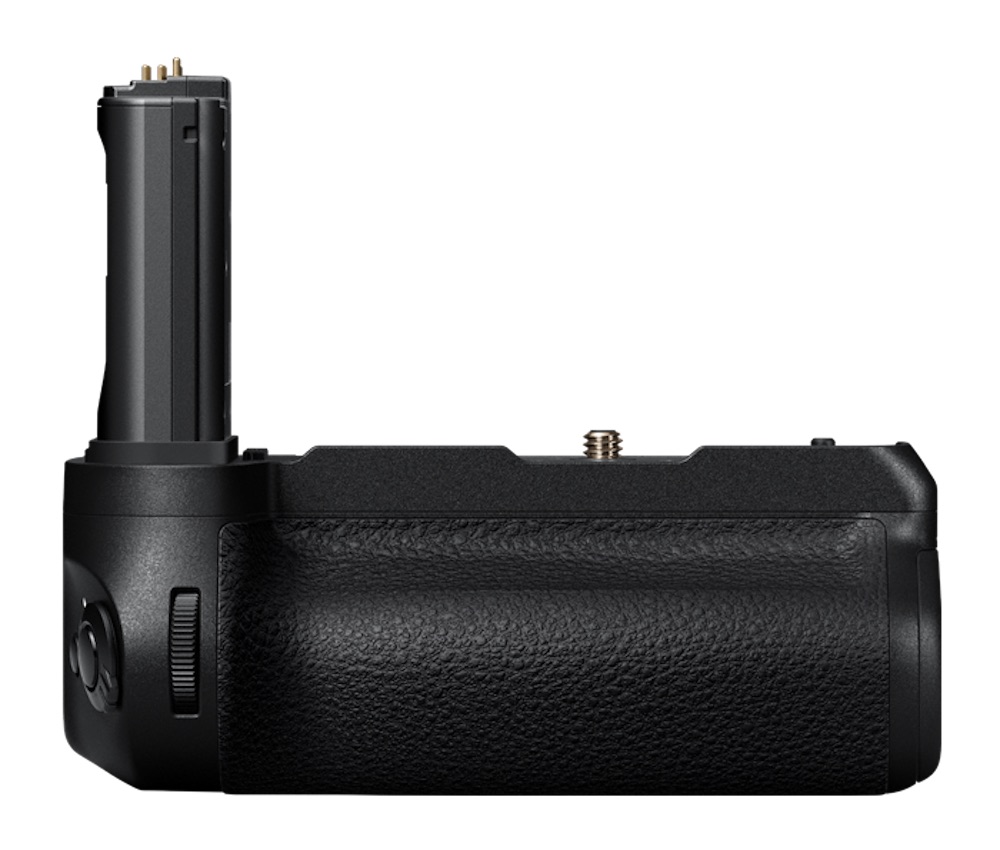
Another new feature caused a lot of complaints about the originals, but I’m not at all sure how big the improvement is. The originals famously had a single, although very fast, XQD/CFExpress card slot – online commentators went crazy demanding dual slots, even though XQD and CFExpress are enough more reliable than SD that a second slot is more in the “nice to have” category than essential for most purposes. There was no room for a second CFExpress slot, so Nikon responded by adding a much slower SD slot to the updated models. The problem is that the camera’s speed is regulated by the slowest card installed. The original Z series had very small buffers, but the very fast cards meant that it was rarely a problem – the camera cleared the buffer so quickly that it was usually ready to shoot at full speed. The new SD slot means that buffer clearing speed has gone down by half or more if there is any card in that slot, and much more than that if the card is anything except a top-end UHS-II model. A fusty old SD card, or a current economy model, could easily quadruple the camera’s buffer clearing time. You can, of course, leave the SD slot empty to keep the fast buffer clearing – but why have it if you can’t use it? Nikon has enlarged the buffer to help deal with the problem – I’ll have to shoot a Z7 II to see whether that is a good solution.
The autofocus and video improvements in the new Z bodies are more of real midlife improvements. When the original Z series came out, 4K 60P video was a very rare feature, limited only to the Panasonic GH5 and a few closely related Micro 4/3 models. A full-frame camera that did 4K 60P would have been unheard of, especially a 45 MP full-frame camera that did 4K 60P! The processing power requirements were just too high. By late 2020, there were quite a few 4K 60P cameras on the market, and it was logical for Nikon to add it. Similarly, the faster processor in the newer cameras is supposed to have improved AF responsiveness – an important improvement, but not something that was available when the originals were released.
The Z5 is a new entry-level full-frame model, slotted against the EOS-RP and older Sony bodies. It keeps a surprising amount of the performance of a Z6 for a much lower price, and using inexpensive SD cards instead of the fast, but pricey CFExpress. Some of the higher end video modes of the Z6, and especially of the Z6 II, are missing, and it has an adequate 4.5 fps top speed as a still camera instead of a blazing 12 fps (both perhaps courtesy of the slower SD cards), but otherwise it’s most of a Z6 in a $1400 camera. I haven’t used one, but it’s reputed to handle just like any other Z, and the Z7 is an absolute joy to use. The sensor is from the Nikon D750, which is one generation previous to the latest 24 MP full-frame sensor, but still excellent image quality. It’s an awful lot of camera for the money, with major advantages over the EOS-RP in image quality, features and handling, and a significant overmatch for the ancient Sony A7 II. The most important competitor is the Sony A7 III, which sometimes sees Z5 price territory on a particularly good special, and will probably end up there permanently when the A7 IV comes out. If you have lenses for one or the other, the choice is made – both are excellent cameras and the one that lets you keep your glass is the best choice. If you want video, the Sony is more capable. If you care more about handling or weather sealing, the Nikon is a better bet.
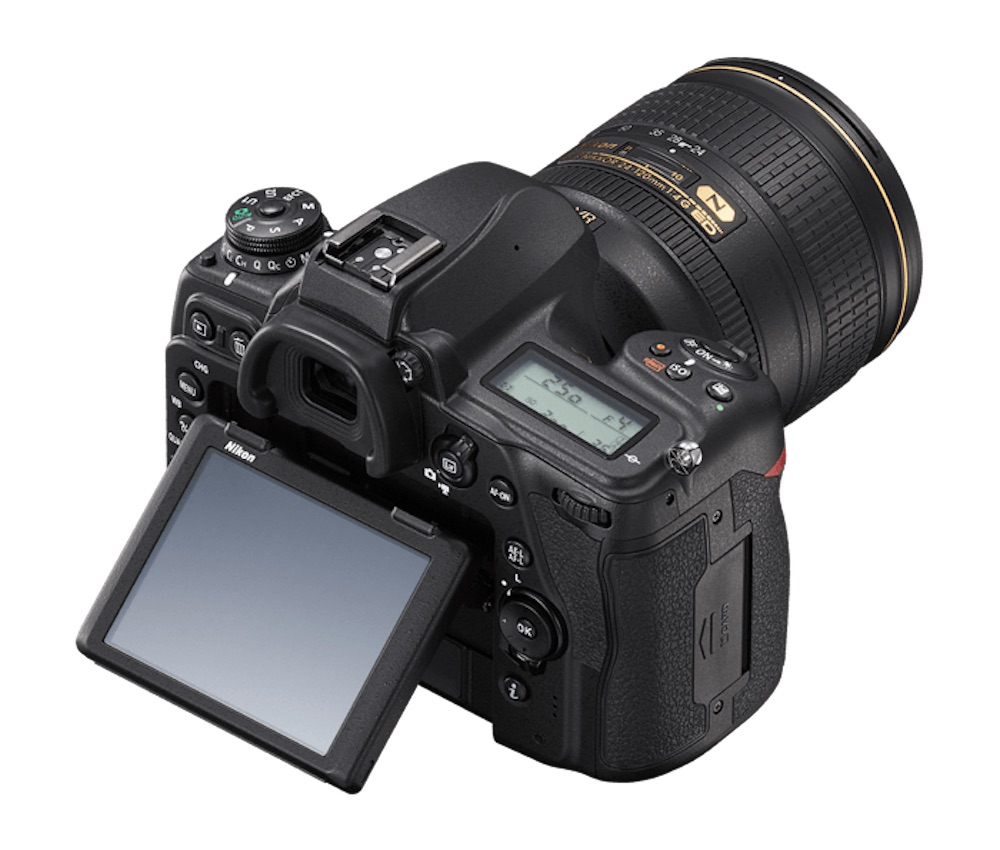
Nikon’s last camera of 2020 is the D780, an update of the D750 DSLR with many of the Z6’s features when operated in live view. Like the Canon Eos 1Dx mk III, it’s as close to a hybrid DSLR/mirrorless camera as we’re going to see unless someone manages a hybrid viewfinder. For most of us, the question is “why not a Z6 II”? If you really want the optical viewfinder, the D780 is a very modern camera that still has one, while also offering 4K video and other mirrorless specialties. Otherwise, a Z series camera will still let us use F mount lenses with excellent performance on the FTZ adapter, while opening up the world of Z mount glass, where Nikon’s innovation will be going forward. A Z series body will also bring in-body image stabilization and a somewhat less confusing interface, because the viewfinder works the same way the rear screen does. Nikon’s hybrid is more accessible to most photographers than Canon’s, as a $2300 midrange DSLR instead of a $6500 sports specialist.
There have been a few new cameras in 2021 from non-major players – all but one are updates, variations and combinations of existing models. The exception is Panasonic’s S5. The S5 is a Z6/A7 III/EOS R6 competitor, and, as one might expect from Panasonic, it’s a capable still camera with standout video features. Using an external recorder, it’ll do both 4K and 5.9K raw video, and it has various video exposure aids, including a vector scope, that its more stills-focused competitors lack. Again typically for Panasonic, it features their DFD autofocus instead of the phase-detect AF used by just about everyone else. DFD keeps getting better, but so does phase-detect, and DFD is still slower than most competitors. Unlike the earlier S1 series, it’s more or less the expected size for a modern mirrorless camera. I can’t help but think that, if this were the initial body release, L-mount might have had a better launch. The S1 and S1r are impressive cameras, but their bulk, and the bulk of the early L-mount lenses are offputting for many photographers (the S1 is actually heavier than any DSLR except the dual-grip sports monsters). Panasonic and Sigma are getting more compact lenses out there, and the S5 is a compelling body, but is it too late? Is it the fourth player in a market with room for three?
Olympus has released two low-end cameras and a high-end one, all updates of existing models. Two feature the 20 MP Same Old Sensor, while the lowest-cost model features an even older 16 MP sensor. The E-M10 series are tiny cameras with very nice user interfaces and decent image stabilization. Pair an E-M10 IV with a small lens, and it’s about the smallest package an interchangeable lens camera comes in. The problem is that a Fujifilm X-S10 isn’t much bigger or more expensive, and it comes with a modern 26 MP sensor instead of the Same Old Sensor.
The E-M1 series cameras, including the 2020 E-M1 mk III, are ultra-rugged, fast, sports-oriented cameras with absurdly good image stabilization that are a fraction of the size and price of Canon, Nikon or Sony’s monsters. High school newspapers will love them! The problem, once you get beyond shooting sports on a budget, is that you are paying the price of the very best APS-C cameras or a midrange full-frame camera for a camera that is ultimately limited by the Same Old Sensor to image quality significantly less than most $500 cameras. The features are unmatched anywhere near the price for a certain kind of shooting, and that image stabilizer is unmatched at any price (unless the newest Canons can match it – I haven’t used those), but it’s ultimately a $1800 camera (sometimes found for less) that has less pixels, less dynamic range and more noise than a $500 camera. If you’re shooting strictly for online and newspaper use, none of that matters and it’s pretty much a baby Nikon D6 with a stabilizer that might as well be a built-in tripod, but if you might want to print, the class-trailing image quality of the Same Old Sensor should give pause. In any case, “what’s JIP going to do with Olympus’ camera business” is a very important question.
We’ll almost certainly see some higher-resolution cameras this coming year, not that we really need them. Canon has been teasing a sensor in the 90 MP range for a couple of years now, and it seems likely that we’ll see a camera from them in that range this year. Sony will almost certainly respond, whether in 2021 or 2022 – the A7r is on a two-year cycle, and the A7r IV was a July 2019 release, so late summer or fall 2021 seems likely unless the pandemic has delayed the sensor they are planning to use. I would expect the Sony sensor to show up in an A7r V that will be a direct descendent of the excellent A7r IV, while the Canon’s offering could either be a high-resolution version of the EOS-R5 (maybe an EOS-R5s) or an even higher-end body. Nikon, too, may release a high-resolution body in 2021, although it is unlikely to be a direct replacement for the Z7/Z7 II. It may be a body with significant extra features at a higher price, or it may wait until 2022 and slot in to the Z7 space in the lineup. The third possibility is that it is a high-resolution sibling model, perhaps called the Z7x, that actually loses some speed compared to the Z7 II. The final high-resolution body I expect to see, although likely the first in the year, is a new Fujifilm, perhaps called the GFX 100S, and possibly arriving as soon as late January.
We already know the imaging characteristics of the sensor in the GFX 100S. It is the existing GFX 100 sensor in a smaller, lighter and hopefully cheaper body. It’s a wonderful sensor, with the highest overall image quality of anything I’ve seen, film or digital – the nearest competitor is an 8×10” transparency (or the ultra-expensive Phase One backs). It’s exactly the same pixel design as the Sony A7r IV sensor and the latest 26 MP sensor used in Fujifilm APS-C cameras – it’s just a bigger version with more of the same pixels. In fact, the 150 MP Phase One sensor is just an even larger version of the same design. If it were possible to stitch perfectly, six stitched exposures from a $1700 X-T4 would be extremely similar to a single shot from a $40,000 Phase One IQ4 150 (assuming similar depth of field or a flat subject). If you like the A7r IV sensor, you’ll like this one.
We have no idea how good a 90-100 MP full-frame sensor is going to be – those pixels are getting worrisomely small. The only sensor with similar pixel density I am aware of in a consumer camera is Micro 4/3’s Same Old Sensor (which would be ~80 MP if it were full-frame). I’d far rather have 15+ MP from ¼ of the Sony A7r IV sensor than 20 MP from the Same Old Sensor in just about any circumstance. Of course, the Same Old Sensor is two or three generations behind the state of the art, so the new Sony sensor will almost certainly have better color, dynamic range and noise performance – but will it be as good as today’s 45-60 MP sensors?
Even assuming an excellent performance from one or both of the new sensors (something like the Z7/D850 or A7r IV sensors, only with more pixels), there are two additional questions about a camera with that much resolution… One is that it will almost certainly require a 44” printer to see the difference between a Z7/A7r IV/ EOS-R5 print and one from a 100 MP sensor, unless the 100 MP sensor has a signature that makes its prints look worse. If it has color, dynamic range and noise like the best of today’s sensors, the resolution advantage will require a huge print to see.
It is difficult to tell a really good 24-26 MP print from a 45-60 MP print at 16×24” – it’s possible, but under close inspection – even an experienced observer would have a hard time on the wall. A 24×36” print from a really good 24-26 MP sensor and lens looks good on the wall, even in a gallery – but put it next to a 45-60 MP version and the difference is obvious from close up. I’ll happily print 40×60” from a Z7 or an A7r IV, which I won’t from a good 24-26 MP sensor – like a 24×36” from 24-26 MP, the print works very well, but if you put your nose right up to it, you might wish you’d used a GFX 100 or stitched. A 90-100 MP sensor will really show its stuff at a print size of 40×60” or above – the native print size of the GFX 100 sensor is 29×39” at 300 dpi, and a beautiful print that big can be made from a 200 dpi or even 150 dpi file with careful resizing. How much of your work ends up that size? Do you have room for a printer the size of a piano? If you are thinking about digital display, what 12K display device are you planning on using? Even at 8K, it has no advantage over a 45-60 MP camera, since both will outresolve the display.
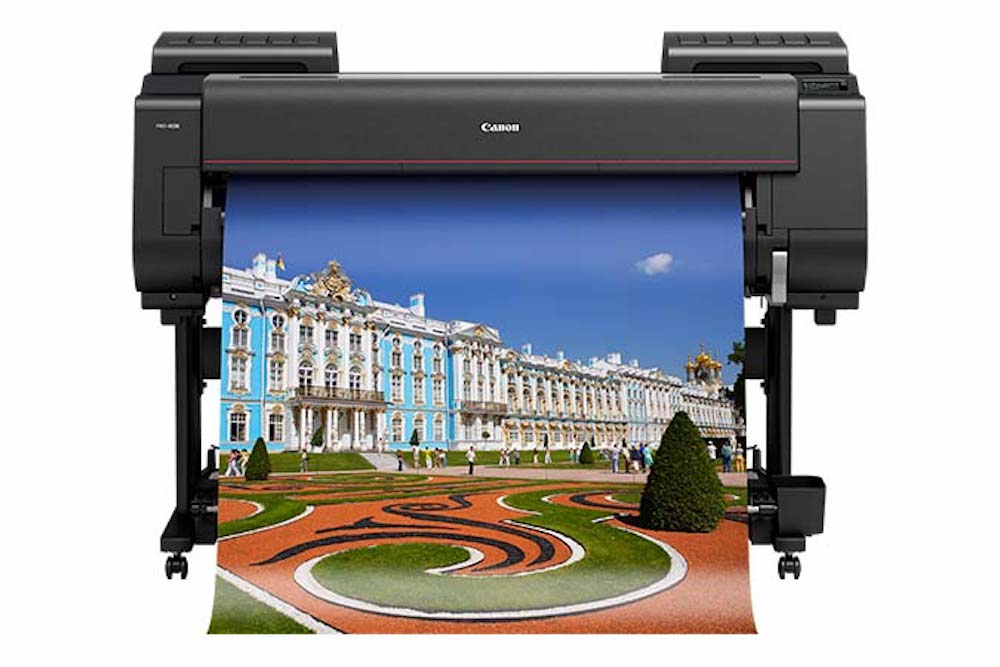

What lenses do you own that will resolve 100 MP? What will even look different between 60 MP and 100 MP? An Otus, sure… Some of the best Sigma Art lenses, like the newish 85mm f1.4, are likely to. A few other excellent lenses – think the best of the Sony G-Master, Canon L and Nikon S lines, mostly primes. Any exotic long telephoto prime from Canon, Nikon, Sony or Sigma. If any zoom that good exists at all, there are VERY few of them. The closest possibility I’ve handled is Nikon’s 24-70mm f2.8 for the Z bodies – it resolves right up to the limits of the Z7 and seems to be begging for more. I’m pretty sure it has at least something more to give on a higher-resolution sensor. I haven’t used the latest Canon or Sony zooms at the top of their lines, nor have I used either of the $10,000 telephoto zooms – but they all seem to be good candidates as well. That’s about it – a bunch of $1000+ primes, mostly $2000+ other than the Sigma Art lenses, and a very tiny list of $2000+ zooms.
How good is your technique for 100 MP? Even the best lens is only that good at optimum aperture – diffraction is going to set in quickly with pixels that small. Handholding will require faster shutter speeds than you’re used to, even with image stabilization, and any subject motion at all is going to show up. Depth of field? What depth of field? The 45-60 MP cameras are already difficult to focus correctly, since any tiny focus error eliminates their resolution advantage. If you’re doing huge prints of architecture or motionless landscape, using a Series 3 or larger tripod (think 6-7 lbs of tripod and head, even in carbon fiber) or have enough light for very high shutter speeds (any noise at all will kill the resolution advantage, so a very high resolution camera will be best at ISO 64-200, maybe ISO 400 at most to see the difference), you might see a gain. If you’re in the studio, controlling light precisely, you’re likely to see a gain with the right lens, and you can light to avoid any dynamic range limits – the Canon 5Ds and 5DsR did well in the studio, despite their DR-limited sensors. If you’re outside of these exacting parameters, a 100 MP full-frame camera probably won’t look any different from your A7r IV, Z7 or R5.
The more practical innovation in cameras than the very high-resolution models will be what, if anything, happens in the midrange. Sony is very likely to introduce an A7 IV relatively early in 2021, and it will probably set a new standard for midrange capability, if for no other reason than it is expected to finally replace the 24 MP full-frame sensor. That may well be the most important camera of the year, although it is likely to be nearly indistinguishable in appearance and handling from any other recent A7. Whatever sensor it uses is likely to be the benchmark for mainstream full-frame cameras for much of the next decade, although it will go through a number of generations, just as its predecessor has. The predictions I’m seeing suggest a modest resolution increase to 30-32 MP, 4K 60P video (but not any “beyond 4K” modes), and some (perhaps substantial) improvement in image quality beyond simple resolution. If that sensor is as good in 2021 as the original 24 MP D3x sensor was in 2000, it will set a very good precedent for cameras to come.
It will also set a challenging benchmark for Fujifilm and any other manufacturers wishing to play at the top of the APS-C heap. A big part of the rationale for expensive APS-C cameras has been that their image quality is very close to comparably priced full-frame cameras. You don’t trade away much image quality at all to get the more compact bodies and Fujifilm’s lens line, so it is reasonable for an X-T4 to be priced around the same as an A7 III or a Z6, and actually more expensive than a Z5 or an EOS-RP. If a new low-end and midrange full-frame sensor opens a much larger gap between the best APS-C image quality and full-frame’s entry point, that no longer works as well. This happened to Micro 4/3 some years ago – there was a time when the gap between Micro 4/3 and APS-C was much less than it is today, and Panasonic and Olympus were able to argue that the slight tradeoff in image quality was worth it for the compactness and features. As the 24 and 26 MP APS-C sensors increased the performance gap versus the Same Old Sensor, that argument became less and less viable. If the new full-frame sensor is an excellent performer, a new top-end APS-C sensor will have to keep up, not necessarily in resolution, but in overall performance.
Most cameras a LuLa reader will be considering in 2021 will offer superb video. 4K 60P will be common, and many cameras will offer quality-focused codecs and even raw video capabilities. Essentially any midrange or high-end camera released in 2021, possibly with a few specialized exceptions (ultra-high-resolution cameras that give up some video capability), should be able to produce video that was the sole province of specialized cinema cameras only a few years ago. It will be hard for any manufacturer to gain traction with a video-focused hybrid like the GH5, because the best of the rest will simply be too good. Any camera that wants to make a mark based largely on its video capabilities will have to offer 4K 120P at a minimum, along with extremely high-quality codecs and a choice of pre-graded and log profiles. Raw video is probably a near-requirement for a specialized video camera.
Modes beyond 4K will probably remain a curiosity, simply because they are essentially impossible to display and even harder to distribute. Even if 8K TVs become common among this winter and spring’s introductions, it will still be a few years before an appreciable number of them are in the wild. Cable doesn’t yet distribute 4K, and streaming services only do so on a very limited basis – neither is likely to show 8K for quite a while yet. 8K will have only two uses – the first is as an archival format for high-end productions that find it worth shooting in 8K for 4K distribution, just as some movies were shot on 70mm film and printed down to 35mm for theaters. The second is in cases where everything from shoot to display is controlled (live video promos in airports, for example). 8K will look impressive, and may well serve some of the role very large transparencies played some years ago – an 8K time-lapse will certainly catch the eye!
The ability to shoot technically superb video doesn’t automatically make a photographer into a cinematographer… The two art forms are related, but they are distinct. Josh Reichmann is posting an interesting series of videos on translating skills here on LuLa (confession: I need to sit down and watch them)… If you’re really interested in learning a new art form, many colleges, universities and workshop centers offer “filmmaking for photographers” courses, and that’s probably a great investment in professional development. We’ll all need to be integrating stills and motion, and that requires new skills.
In addition to the new skills working with video requires, it requires significant investments in computing power and (especially) storage. Today’s highest-end video modes either barely manage to record onto the fastest SD cards, or can’t record on SD at all, needing either CFExpress/XQD, CFast or direct SSD recording. Video recorded in really high quality 4K takes up (roughly) between 100 gigabytes and a terabyte of storage per hour – and 8K is four times that. Only SSDs are fast enough to work with these formats, and, at the higher end, it can require NVMe SSDs. Hard drives can certainly archive footage, but can’t serve as working drives.
Dan Wells
January 2021

Lorem ipsum dolor sit amet, consectetur adipiscing elit, sed do eiusmod tempor incididunt ut labore et dolore magna aliqua. Ut enim ad minim veniam, quis nostrud exercitation ullamco laboris nisi ut aliquip ex ea commodo consequat. Duis aute irure dolor in reprehenderit in voluptate velit esse cillum dolore eu fugiat nulla pariatur. Excepteur sint occaecat cupidatat non proident, sunt in culpa qui officia deserunt mollit anim id est laborum.
Lorem ipsum dolor sit amet, consectetur adipiscing elit, sed do eiusmod tempor incididunt ut labore et dolore magna aliqua. Ut enim ad minim veniam, quis nostrud exercitation ullamco laboris nisi ut aliquip ex ea commodo consequat. Duis aute irure dolor in reprehenderit in voluptate velit esse cillum dolore eu fugiat nulla pariatur. Excepteur sint occaecat cupidatat non proident, sunt in culpa qui officia deserunt mollit anim id est laborum.
Lorem ipsum dolor sit amet, consectetur adipiscing elit, sed do eiusmod tempor incididunt ut labore et dolore magna aliqua. Ut enim ad minim veniam, quis nostrud exercitation ullamco laboris nisi ut aliquip ex ea commodo consequat. Duis aute irure dolor in reprehenderit in voluptate velit esse cillum dolore eu fugiat nulla pariatur. Excepteur sint occaecat cupidatat non proident, sunt in culpa qui officia deserunt mollit anim id est laborum.
Lorem ipsum dolor sit amet, consectetur adipiscing elit, sed do eiusmod tempor incididunt ut labore et dolore magna aliqua. Ut enim ad minim veniam, quis nostrud exercitation ullamco laboris nisi ut aliquip ex ea commodo consequat. Duis aute irure dolor in reprehenderit in voluptate velit esse cillum dolore eu fugiat nulla pariatur. Excepteur sint occaecat cupidatat non proident, sunt in culpa qui officia deserunt mollit anim id est laborum.

Lorem ipsum dolor sit amet, consectetur adipiscing elit, sed do eiusmod tempor incididunt ut labore et dolore magna aliqua. Ut enim ad minim veniam, quis nostrud exercitation ullamco laboris nisi ut aliquip ex ea commodo consequat. Duis aute irure dolor in reprehenderit in voluptate velit esse cillum dolore eu fugiat nulla pariatur. Excepteur sint occaecat cupidatat non proident, sunt in culpa qui officia deserunt mollit anim id est laborum.

Lorem ipsum dolor sit amet, consectetur adipiscing elit, sed do eiusmod tempor incididunt ut labore et dolore magna aliqua. Ut enim ad minim veniam, quis nostrud exercitation ullamco laboris nisi ut aliquip ex ea commodo consequat. Duis aute irure dolor in reprehenderit in voluptate velit esse cillum dolore eu fugiat nulla pariatur. Excepteur sint occaecat cupidatat non proident, sunt in culpa qui officia deserunt mollit anim id est laborum.
Lorem ipsum dolor sit amet, consectetur adipiscing elit, sed do eiusmod tempor incididunt ut labore et dolore magna aliqua. Ut enim ad minim veniam, quis nostrud exercitation ullamco laboris nisi ut aliquip ex ea commodo consequat. Duis aute irure dolor in reprehenderit in voluptate velit esse cillum dolore eu fugiat nulla pariatur. Excepteur sint occaecat cupidatat non proident, sunt in culpa qui officia deserunt mollit anim id est laborum.
Lorem ipsum dolor sit amet, consectetur adipiscing elit, sed do eiusmod tempor incididunt ut labore et dolore magna aliqua. Ut enim ad minim veniam, quis nostrud exercitation ullamco laboris nisi ut aliquip ex ea commodo consequat. Duis aute irure dolor in reprehenderit in voluptate velit esse cillum dolore eu fugiat nulla pariatur. Excepteur sint occaecat cupidatat non proident, sunt in culpa qui officia deserunt mollit anim id est laborum.
Lorem ipsum dolor sit amet, consectetur adipiscing elit, sed do eiusmod tempor incididunt ut labore et dolore magna aliqua. Ut enim ad minim veniam, quis nostrud exercitation ullamco laboris nisi ut aliquip ex ea commodo consequat. Duis aute irure dolor in reprehenderit in voluptate velit esse cillum dolore eu fugiat nulla pariatur. Excepteur sint occaecat cupidatat non proident, sunt in culpa qui officia deserunt mollit anim id est laborum.

Lorem ipsum dolor sit amet, consectetur adipiscing elit, sed do eiusmod tempor incididunt ut labore et dolore magna aliqua. Ut enim ad minim veniam, quis nostrud exercitation ullamco laboris nisi ut aliquip ex ea commodo consequat. Duis aute irure dolor in reprehenderit in voluptate velit esse cillum dolore eu fugiat nulla pariatur. Excepteur sint occaecat cupidatat non proident, sunt in culpa qui officia deserunt mollit anim id est laborum.
Lorem ipsum dolor sit amet, consectetur adipiscing elit, sed do eiusmod tempor incididunt ut labore et dolore magna aliqua. Ut enim ad minim veniam, quis nostrud exercitation ullamco laboris nisi ut aliquip ex ea commodo consequat. Duis aute irure dolor in reprehenderit in voluptate velit esse cillum dolore eu fugiat nulla pariatur. Excepteur sint occaecat cupidatat non proident, sunt in culpa qui officia deserunt mollit anim id est laborum.
Lorem ipsum dolor sit amet, consectetur adipiscing elit, sed do eiusmod tempor incididunt ut labore et dolore magna aliqua. Ut enim ad minim veniam, quis nostrud exercitation ullamco laboris nisi ut aliquip ex ea commodo consequat. Duis aute irure dolor in reprehenderit in voluptate velit esse cillum dolore eu fugiat nulla pariatur. Excepteur sint occaecat cupidatat non proident, sunt in culpa qui officia deserunt mollit anim id est laborum.

Lorem ipsum dolor sit amet, consectetur adipiscing elit, sed do eiusmod tempor incididunt ut labore et dolore magna aliqua. Ut enim ad minim veniam, quis nostrud exercitation ullamco laboris nisi ut aliquip ex ea commodo consequat. Duis aute irure dolor in reprehenderit in voluptate velit esse cillum dolore eu fugiat nulla pariatur. Excepteur sint occaecat cupidatat non proident, sunt in culpa qui officia deserunt mollit anim id est laborum.
Lorem ipsum dolor sit amet, consectetur adipiscing elit, sed do eiusmod tempor incididunt ut labore et dolore magna aliqua. Ut enim ad minim veniam, quis nostrud exercitation ullamco laboris nisi ut aliquip ex ea commodo consequat. Duis aute irure dolor in reprehenderit in voluptate velit esse cillum dolore eu fugiat nulla pariatur. Excepteur sint occaecat cupidatat non proident, sunt in culpa qui officia deserunt mollit anim id est laborum.

Lorem ipsum dolor sit amet, consectetur adipiscing elit, sed do eiusmod tempor incididunt ut labore et dolore magna aliqua. Ut enim ad minim veniam, quis nostrud exercitation ullamco laboris nisi ut aliquip ex ea commodo consequat. Duis aute irure dolor in reprehenderit in voluptate velit esse cillum dolore eu fugiat nulla pariatur. Excepteur sint occaecat cupidatat non proident, sunt in culpa qui officia deserunt mollit anim id est laborum.
Lorem ipsum dolor sit amet, consectetur adipiscing elit, sed do eiusmod tempor incididunt ut labore et dolore magna aliqua. Ut enim ad minim veniam, quis nostrud exercitation ullamco laboris nisi ut aliquip ex ea commodo consequat. Duis aute irure dolor in reprehenderit in voluptate velit esse cillum dolore eu fugiat nulla pariatur. Excepteur sint occaecat cupidatat non proident, sunt in culpa qui officia deserunt mollit anim id est laborum.

Lorem ipsum dolor sit amet, consectetur adipiscing elit, sed do eiusmod tempor incididunt ut labore et dolore magna aliqua. Ut enim ad minim veniam, quis nostrud exercitation ullamco laboris nisi ut aliquip ex ea commodo consequat. Duis aute irure dolor in reprehenderit in voluptate velit esse cillum dolore eu fugiat nulla pariatur. Excepteur sint occaecat cupidatat non proident, sunt in culpa qui officia deserunt mollit anim id est laborum.
Lorem ipsum dolor sit amet, consectetur adipiscing elit, sed do eiusmod tempor incididunt ut labore et dolore magna aliqua. Ut enim ad minim veniam, quis nostrud exercitation ullamco laboris nisi ut aliquip ex ea commodo consequat. Duis aute irure dolor in reprehenderit in voluptate velit esse cillum dolore eu fugiat nulla pariatur. Excepteur sint occaecat cupidatat non proident, sunt in culpa qui officia deserunt mollit anim id est laborum.

Lorem ipsum dolor sit amet, consectetur adipiscing elit, sed do eiusmod tempor incididunt ut labore et dolore magna aliqua. Ut enim ad minim veniam, quis nostrud exercitation ullamco laboris nisi ut aliquip ex ea commodo consequat. Duis aute irure dolor in reprehenderit in voluptate velit esse cillum dolore eu fugiat nulla pariatur. Excepteur sint occaecat cupidatat non proident, sunt in culpa qui officia deserunt mollit anim id est laborum.
Lorem ipsum dolor sit amet, consectetur adipiscing elit, sed do eiusmod tempor incididunt ut labore et dolore magna aliqua. Ut enim ad minim veniam, quis nostrud exercitation ullamco laboris nisi ut aliquip ex ea commodo consequat. Duis aute irure dolor in reprehenderit in voluptate velit esse cillum dolore eu fugiat nulla pariatur. Excepteur sint occaecat cupidatat non proident, sunt in culpa qui officia deserunt mollit anim id est laborum.
Lorem ipsum dolor sit amet, consectetur adipiscing elit, sed do eiusmod tempor incididunt ut labore et dolore magna aliqua. Ut enim ad minim veniam, quis nostrud exercitation ullamco laboris nisi ut aliquip ex ea commodo consequat. Duis aute irure dolor in reprehenderit in voluptate velit esse cillum dolore eu fugiat nulla pariatur. Excepteur sint occaecat cupidatat non proident, sunt in culpa qui officia deserunt mollit anim id est laborum.
Lorem ipsum dolor sit amet, consectetur adipiscing elit, sed do eiusmod tempor incididunt ut labore et dolore magna aliqua. Ut enim ad minim veniam, quis nostrud exercitation ullamco laboris nisi ut aliquip ex ea commodo consequat. Duis aute irure dolor in reprehenderit in voluptate velit esse cillum dolore eu fugiat nulla pariatur. Excepteur sint occaecat cupidatat non proident, sunt in culpa qui officia deserunt mollit anim id est laborum.

Lorem ipsum dolor sit amet, consectetur adipiscing elit, sed do eiusmod tempor incididunt ut labore et dolore magna aliqua. Ut enim ad minim veniam, quis nostrud exercitation ullamco laboris nisi ut aliquip ex ea commodo consequat. Duis aute irure dolor in reprehenderit in voluptate velit esse cillum dolore eu fugiat nulla pariatur. Excepteur sint occaecat cupidatat non proident, sunt in culpa qui officia deserunt mollit anim id est laborum.
Lorem ipsum dolor sit amet, consectetur adipiscing elit, sed do eiusmod tempor incididunt ut labore et dolore magna aliqua. Ut enim ad minim veniam, quis nostrud exercitation ullamco laboris nisi ut aliquip ex ea commodo consequat. Duis aute irure dolor in reprehenderit in voluptate velit esse cillum dolore eu fugiat nulla pariatur. Excepteur sint occaecat cupidatat non proident, sunt in culpa qui officia deserunt mollit anim id est laborum.
Lorem ipsum dolor sit amet, consectetur adipiscing elit, sed do eiusmod tempor incididunt ut labore et dolore magna aliqua. Ut enim ad minim veniam, quis nostrud exercitation ullamco laboris nisi ut aliquip ex ea commodo consequat. Duis aute irure dolor in reprehenderit in voluptate velit esse cillum dolore eu fugiat nulla pariatur. Excepteur sint occaecat cupidatat non proident, sunt in culpa qui officia deserunt mollit anim id est laborum.
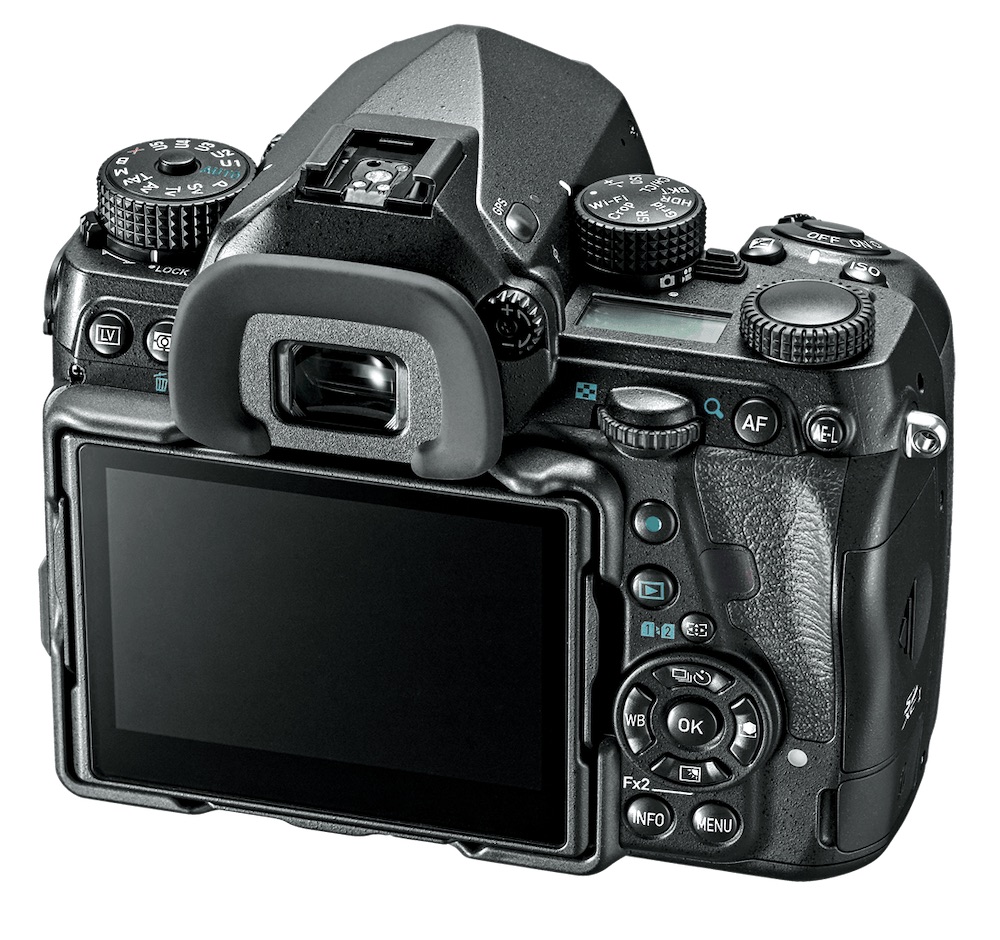
Lorem ipsum dolor sit amet, consectetur adipiscing elit, sed do eiusmod tempor incididunt ut labore et dolore magna aliqua. Ut enim ad minim veniam, quis nostrud exercitation ullamco laboris nisi ut aliquip ex ea commodo consequat. Duis aute irure dolor in reprehenderit in voluptate velit esse cillum dolore eu fugiat nulla pariatur. Excepteur sint occaecat cupidatat non proident, sunt in culpa qui officia deserunt mollit anim id est laborum.

Lorem ipsum dolor sit amet, consectetur adipiscing elit, sed do eiusmod tempor incididunt ut labore et dolore magna aliqua. Ut enim ad minim veniam, quis nostrud exercitation ullamco laboris nisi ut aliquip ex ea commodo consequat. Duis aute irure dolor in reprehenderit in voluptate velit esse cillum dolore eu fugiat nulla pariatur. Excepteur sint occaecat cupidatat non proident, sunt in culpa qui officia deserunt mollit anim id est laborum.

Lorem ipsum dolor sit amet, consectetur adipiscing elit, sed do eiusmod tempor incididunt ut labore et dolore magna aliqua. Ut enim ad minim veniam, quis nostrud exercitation ullamco laboris nisi ut aliquip ex ea commodo consequat. Duis aute irure dolor in reprehenderit in voluptate velit esse cillum dolore eu fugiat nulla pariatur. Excepteur sint occaecat cupidatat non proident, sunt in culpa qui officia deserunt mollit anim id est laborum.
Lorem ipsum dolor sit amet, consectetur adipiscing elit, sed do eiusmod tempor incididunt ut labore et dolore magna aliqua. Ut enim ad minim veniam, quis nostrud exercitation ullamco laboris nisi ut aliquip ex ea commodo consequat. Duis aute irure dolor in reprehenderit in voluptate velit esse cillum dolore eu fugiat nulla pariatur. Excepteur sint occaecat cupidatat non proident, sunt in culpa qui officia deserunt mollit anim id est laborum.
Lorem ipsum dolor sit amet, consectetur adipiscing elit, sed do eiusmod tempor incididunt ut labore et dolore magna aliqua. Ut enim ad minim veniam, quis nostrud exercitation ullamco laboris nisi ut aliquip ex ea commodo consequat. Duis aute irure dolor in reprehenderit in voluptate velit esse cillum dolore eu fugiat nulla pariatur. Excepteur sint occaecat cupidatat non proident, sunt in culpa qui officia deserunt mollit anim id est laborum.

Lorem ipsum dolor sit amet, consectetur adipiscing elit, sed do eiusmod tempor incididunt ut labore et dolore magna aliqua. Ut enim ad minim veniam, quis nostrud exercitation ullamco laboris nisi ut aliquip ex ea commodo consequat. Duis aute irure dolor in reprehenderit in voluptate velit esse cillum dolore eu fugiat nulla pariatur. Excepteur sint occaecat cupidatat non proident, sunt in culpa qui officia deserunt mollit anim id est laborum.
Lorem ipsum dolor sit amet, consectetur adipiscing elit, sed do eiusmod tempor incididunt ut labore et dolore magna aliqua. Ut enim ad minim veniam, quis nostrud exercitation ullamco laboris nisi ut aliquip ex ea commodo consequat. Duis aute irure dolor in reprehenderit in voluptate velit esse cillum dolore eu fugiat nulla pariatur. Excepteur sint occaecat cupidatat non proident, sunt in culpa qui officia deserunt mollit anim id est laborum.
Lorem ipsum dolor sit amet, consectetur adipiscing elit, sed do eiusmod tempor incididunt ut labore et dolore magna aliqua. Ut enim ad minim veniam, quis nostrud exercitation ullamco laboris nisi ut aliquip ex ea commodo consequat. Duis aute irure dolor in reprehenderit in voluptate velit esse cillum dolore eu fugiat nulla pariatur. Excepteur sint occaecat cupidatat non proident, sunt in culpa qui officia deserunt mollit anim id est laborum.
Lorem ipsum dolor sit amet, consectetur adipiscing elit, sed do eiusmod tempor incididunt ut labore et dolore magna aliqua. Ut enim ad minim veniam, quis nostrud exercitation ullamco laboris nisi ut aliquip ex ea commodo consequat. Duis aute irure dolor in reprehenderit in voluptate velit esse cillum dolore eu fugiat nulla pariatur. Excepteur sint occaecat cupidatat non proident, sunt in culpa qui officia deserunt mollit anim id est laborum.

Lorem ipsum dolor sit amet, consectetur adipiscing elit, sed do eiusmod tempor incididunt ut labore et dolore magna aliqua. Ut enim ad minim veniam, quis nostrud exercitation ullamco laboris nisi ut aliquip ex ea commodo consequat. Duis aute irure dolor in reprehenderit in voluptate velit esse cillum dolore eu fugiat nulla pariatur. Excepteur sint occaecat cupidatat non proident, sunt in culpa qui officia deserunt mollit anim id est laborum.
Lorem ipsum dolor sit amet, consectetur adipiscing elit, sed do eiusmod tempor incididunt ut labore et dolore magna aliqua. Ut enim ad minim veniam, quis nostrud exercitation ullamco laboris nisi ut aliquip ex ea commodo consequat. Duis aute irure dolor in reprehenderit in voluptate velit esse cillum dolore eu fugiat nulla pariatur. Excepteur sint occaecat cupidatat non proident, sunt in culpa qui officia deserunt mollit anim id est laborum.
Lorem ipsum dolor sit amet, consectetur adipiscing elit, sed do eiusmod tempor incididunt ut labore et dolore magna aliqua. Ut enim ad minim veniam, quis nostrud exercitation ullamco laboris nisi ut aliquip ex ea commodo consequat. Duis aute irure dolor in reprehenderit in voluptate velit esse cillum dolore eu fugiat nulla pariatur. Excepteur sint occaecat cupidatat non proident, sunt in culpa qui officia deserunt mollit anim id est laborum.

Lorem ipsum dolor sit amet, consectetur adipiscing elit, sed do eiusmod tempor incididunt ut labore et dolore magna aliqua. Ut enim ad minim veniam, quis nostrud exercitation ullamco laboris nisi ut aliquip ex ea commodo consequat. Duis aute irure dolor in reprehenderit in voluptate velit esse cillum dolore eu fugiat nulla pariatur. Excepteur sint occaecat cupidatat non proident, sunt in culpa qui officia deserunt mollit anim id est laborum.
Lorem ipsum dolor sit amet, consectetur adipiscing elit, sed do eiusmod tempor incididunt ut labore et dolore magna aliqua. Ut enim ad minim veniam, quis nostrud exercitation ullamco laboris nisi ut aliquip ex ea commodo consequat. Duis aute irure dolor in reprehenderit in voluptate velit esse cillum dolore eu fugiat nulla pariatur. Excepteur sint occaecat cupidatat non proident, sunt in culpa qui officia deserunt mollit anim id est laborum.
Lorem ipsum dolor sit amet, consectetur adipiscing elit, sed do eiusmod tempor incididunt ut labore et dolore magna aliqua. Ut enim ad minim veniam, quis nostrud exercitation ullamco laboris nisi ut aliquip ex ea commodo consequat. Duis aute irure dolor in reprehenderit in voluptate velit esse cillum dolore eu fugiat nulla pariatur. Excepteur sint occaecat cupidatat non proident, sunt in culpa qui officia deserunt mollit anim id est laborum.
Lorem ipsum dolor sit amet, consectetur adipiscing elit, sed do eiusmod tempor incididunt ut labore et dolore magna aliqua. Ut enim ad minim veniam, quis nostrud exercitation ullamco laboris nisi ut aliquip ex ea commodo consequat. Duis aute irure dolor in reprehenderit in voluptate velit esse cillum dolore eu fugiat nulla pariatur. Excepteur sint occaecat cupidatat non proident, sunt in culpa qui officia deserunt mollit anim id est laborum.

Lorem ipsum dolor sit amet, consectetur adipiscing elit, sed do eiusmod tempor incididunt ut labore et dolore magna aliqua. Ut enim ad minim veniam, quis nostrud exercitation ullamco laboris nisi ut aliquip ex ea commodo consequat. Duis aute irure dolor in reprehenderit in voluptate velit esse cillum dolore eu fugiat nulla pariatur. Excepteur sint occaecat cupidatat non proident, sunt in culpa qui officia deserunt mollit anim id est laborum.
Lorem ipsum dolor sit amet, consectetur adipiscing elit, sed do eiusmod tempor incididunt ut labore et dolore magna aliqua. Ut enim ad minim veniam, quis nostrud exercitation ullamco laboris nisi ut aliquip ex ea commodo consequat. Duis aute irure dolor in reprehenderit in voluptate velit esse cillum dolore eu fugiat nulla pariatur. Excepteur sint occaecat cupidatat non proident, sunt in culpa qui officia deserunt mollit anim id est laborum.

Lorem ipsum dolor sit amet, consectetur adipiscing elit, sed do eiusmod tempor incididunt ut labore et dolore magna aliqua. Ut enim ad minim veniam, quis nostrud exercitation ullamco laboris nisi ut aliquip ex ea commodo consequat. Duis aute irure dolor in reprehenderit in voluptate velit esse cillum dolore eu fugiat nulla pariatur. Excepteur sint occaecat cupidatat non proident, sunt in culpa qui officia deserunt mollit anim id est laborum.

Lorem ipsum dolor sit amet, consectetur adipiscing elit, sed do eiusmod tempor incididunt ut labore et dolore magna aliqua. Ut enim ad minim veniam, quis nostrud exercitation ullamco laboris nisi ut aliquip ex ea commodo consequat. Duis aute irure dolor in reprehenderit in voluptate velit esse cillum dolore eu fugiat nulla pariatur. Excepteur sint occaecat cupidatat non proident, sunt in culpa qui officia deserunt mollit anim id est laborum.
Lorem ipsum dolor sit amet, consectetur adipiscing elit, sed do eiusmod tempor incididunt ut labore et dolore magna aliqua. Ut enim ad minim veniam, quis nostrud exercitation ullamco laboris nisi ut aliquip ex ea commodo consequat. Duis aute irure dolor in reprehenderit in voluptate velit esse cillum dolore eu fugiat nulla pariatur. Excepteur sint occaecat cupidatat non proident, sunt in culpa qui officia deserunt mollit anim id est laborum.

Lorem ipsum dolor sit amet, consectetur adipiscing elit, sed do eiusmod tempor incididunt ut labore et dolore magna aliqua. Ut enim ad minim veniam, quis nostrud exercitation ullamco laboris nisi ut aliquip ex ea commodo consequat. Duis aute irure dolor in reprehenderit in voluptate velit esse cillum dolore eu fugiat nulla pariatur. Excepteur sint occaecat cupidatat non proident, sunt in culpa qui officia deserunt mollit anim id est laborum.
You May Also Enjoy...
Focus on the Journey: “Sea of Fog Sunset” with Simon Schumacher
FacebookTweet Fellow photographers, this “Focus on the Journey” segment is for us. It’s a segment dedicated to sharing the deeper and personal stories behind a
Welcome to the LuLa Team: Jon ‘Swindy’ Swindall’s World Through a Lens
FacebookTweet Why Me? A Life Devoted to Capturing Beauty with Cameras Hey Luminous Landscape Community, Thank you for being a part of this community. I’m


